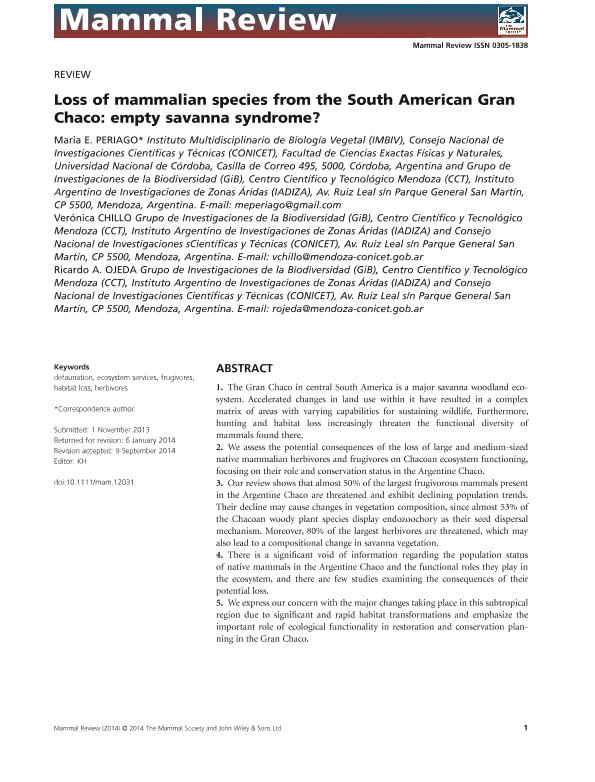Artículo
Loss of mammalian species from the South American Gran Chaco: Empty savanna syndrome?
Fecha de publicación:
01/2015
Editorial:
Wiley Blackwell Publishing, Inc
Revista:
Mammal Review
ISSN:
0305-1838
Idioma:
Inglés
Tipo de recurso:
Artículo publicado
Clasificación temática:
Resumen
The Gran Chaco in central South America is a major savanna woodland ecosystem. Accelerated changes in land use within it have resulted in a complex matrix of areas with varying capabilities for sustaining wildlife. Furthermore, hunting and habitat loss increasingly threaten the functional diversity of mammals found there. We assess the potential consequences of the loss of large and medium-sized native mammalian herbivores and frugivores on Chacoan ecosystem functioning, focusing on their role and conservation status in the Argentine Chaco. Our review shows that almost 50% of the largest frugivorous mammals present in the Argentine Chaco are threatened and exhibit declining population trends. Their decline may cause changes in vegetation composition, since almost 53% of the Chacoan woody plant species display endozoochory as their seed dispersal mechanism. Moreover, 80% of the largest herbivores are threatened, which may also lead to a compositional change in savanna vegetation. There is a significant void of information regarding the population status of native mammals in the Argentine Chaco and the functional roles they play in the ecosystem, and there are few studies examining the consequences of their potential loss. We express our concern with the major changes taking place in this subtropical region due to significant and rapid habitat transformations and emphasize the important role of ecological functionality in restoration and conservation planning in the Gran Chaco.
Palabras clave:
DEFAUNATION
,
ECOSYSTEM SERVICES
,
FRUGIVORES
,
HABITAT LOSS
,
HERBIVORES
Archivos asociados
Licencia
Identificadores
Colecciones
Articulos(IADIZA)
Articulos de INST. ARG DE INVEST. DE LAS ZONAS ARIDAS
Articulos de INST. ARG DE INVEST. DE LAS ZONAS ARIDAS
Citación
Periago, Maria Eugenia; Chillo, María Verónica; Ojeda, Ricardo Alberto; Loss of mammalian species from the South American Gran Chaco: Empty savanna syndrome?; Wiley Blackwell Publishing, Inc; Mammal Review; 45; 1; 1-2015; 41-53
Compartir
Altmétricas




